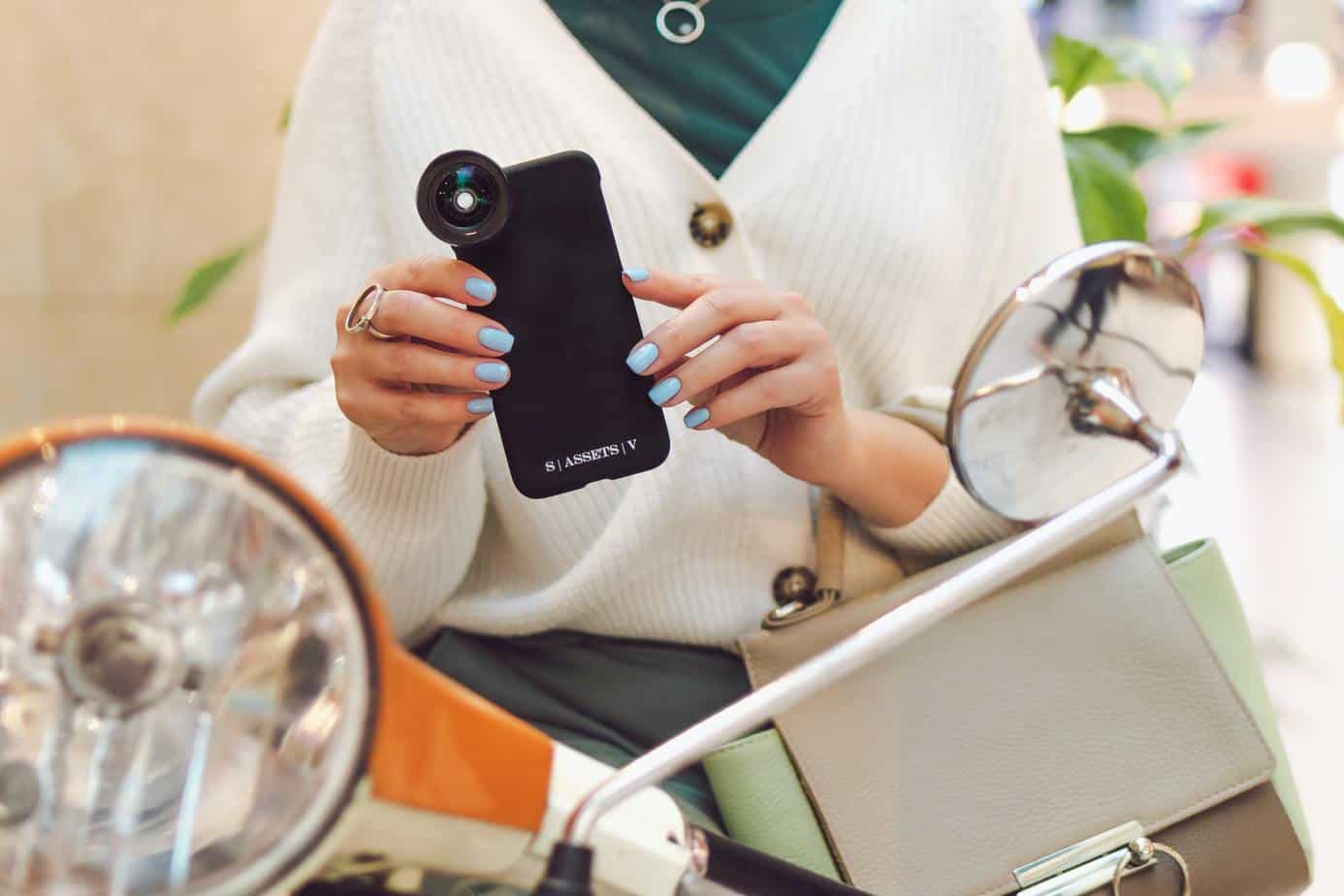What Is a Micro-Influencer? A Guide to Marketing Strategy


Picture this: you’ve poured your soul into a sustainable fashion startup, but you're getting drowned out by the big-budget noise of established brands. It can feel challenging when the old ways of connecting just aren't cutting it. The core of your challenge is building real consumer trust and cutting through the marketing bullshit.
This is where a solid micro-influencer marketing strategy comes in, offering a powerful, authentic way to connect with the people you actually want to reach.
Let's be honest – traditional marketing is on life support. Today’s consumers are smart, they do their homework before buying, and they have a finely tuned radar for obvious brand messaging. Micro-influencers are the bridge over this gap. They build trust with their followers first, then lend that credibility to your brand through a genuine connection.
In the world of social media, influencers are generally sorted into four tiers: mega, macro, micro, and nano. Each has its own flavor and value.

So, what is a micro-influencer? Typically, they have a following between 1,000 and 100,000 people and are seen as specialists in their niche. But don't get hung up on the follower count. The real magic – and one of the biggest benefits of micro-influencers – is their killer engagement rates and deep expertise.
Focusing only on follower count is a rookie move. The data shows that nano-influencers (1K–10K followers) and micro-influencers (10K–50K followers) consistently crush their larger counterparts in engagement.
The 'expert' factor is everything. A micro-influencer is a trusted peer. Here are some micro-influencer examples:
Basically, anyone who has truly mastered a specific world can become influential. It’s a fact that influencer engagement often decreases as follower counts go up. The 1K-100K sweet spot is where you'll often find the maximum engagement.
When you're weighing up micro vs macro influencers, the key difference is connection. Micro-influencers foster real, two-way conversations. They're in the comments and DMs, chatting with their followers and building a genuine community.
This is the complete opposite of the one-way broadcast you get from celebrities and mega-influencers, whose audiences are too massive for any real personal interaction.
This authentic bond creates unshakable trust. So when a micro-influencer recommends a product, it feels like advice from a friend, not a soulless, paid advertisement.
While you're chasing the big names for your brand, your customers are listening to a micro-influencer with 10k followers who actually gives a shit, not a celebrity who just cashed your check. Their relatability is their superpower; followers see them as peers, making their endorsements far more credible and powerful.
Let's get down to business. If you're still on the fence, here’s the strategic breakdown of why working with micro-influencers is one of the smartest moves you can make.


This isn't just a hunch; it's a fact backed by data. One of the primary benefits of micro-influencers is that they deliver significantly higher engagement rates than influencers with millions of followers.
Why? Because they can actually talk to their audience.
Micro-influencers on Instagram boast an average engagement rate of 3.86%, while mega-influencers barely scratch 1.21%. That's more than triple the interaction. This happens because micro-influencers foster real communities, not just a follower count. They can maintain personal connections, which leads to higher-quality interactions and, more importantly, better conversion rates.

Think about it. People trust recommendations from other people, not ads. It’s the same reason you check restaurant reviews before booking a table. Micro-influencers act as those trusted reviewers, and when they vouch for you, that credibility transfers directly to your brand, bringing in qualified leads and actual sales.
Sure, you could blow your entire marketing budget on a single post from a macro-influencer or celebrity. Or you could be smart about it.
Micro-influencers are wildly more cost-effective. A mid-tier influencer might charge over $1,000 for a single post – a price that’s out of reach for most startups and small businesses. Meanwhile, you can partner with a fantastic micro-influencer for a fraction of that cost, often between $100 and $500.

This approach is also about targeted reach. When you're comparing micro vs macro influencers, remember that a celebrity's followers are spread across countless demographics and locations, many of which are completely wrong for your brand. You end up paying for eyeballs that will never convert.
Micro-influencers, on the other hand, command a specific niche. Their audience is targeted, engaged, and primed to listen. This means you eliminate wasted ad spend and get a much higher response from the right people.
For the cost of one macro-influencer campaign, you can build a diversified micro-influencer marketing strategy with several creators, compounding your value and reaching multiple engaged communities at once.
So, you're sold on the idea, but is a micro-influencer marketing strategy actually the right move for your business? Let's break it down.

True power isn’t in the roar; it’s in the resonance. A massive broadcast can be ignored, but a quiet word from a trusted source cuts through the noise. This is why micro-influencers are the perfect engine for businesses with limited marketing budgets, niche products, or local services.
This strategy is a game-changer if you are a:
And lest you think this is only a small-fry game, think again. Large companies can get in on this, too.
Instead of dropping a fortune on a single celebrity endorsement, big brands can deploy an entire "army of influencers" for a single campaign. It's often cheaper, far more effective, and helps massive corporations regain a little of that grassroots authenticity they lost long ago.
A brilliant example of this is the boots brand Sperry. They ran a killer two-week marketing campaign by working with micro-influencers in the fashion space. They had these creators post outfits featuring Sperry boots with the hashtag #OTD (outfit of the day).
Because #OTD is a massively popular tag, the posts shot up in Instagram searches and Explore pages, reaching thousands of users actively looking for style inspiration. It was a masterclass in leveraging influencer trust, and the campaign led to a major spike in sales.
Alright, let's get to the fun part. Here’s your step-by-step guide to working with micro-influencers without losing your mind.

Your first move is to become a detective. Use hashtag search options to find creators who are a perfect fit for your brand.
When manual searching feels like finding a needle in a haystack, or you're ready to scale your efforts, influencer databases can be a lifesaver.

Tools like Scrunch give you access to millions of creator profiles, saving you time with pre-vetted lists and performance analytics. But here’s the reality check: these platforms aren't magic. While a database might boast over 20 million influencers, users sometimes report mismatches between search filters and the results they get.
Think of these tools as a powerful starting point, not the final word. Always follow up with your own manual vetting to ensure an influencer truly aligns with your brand’s values.
Still sending out generic, copy-pasted influencer messages? Learning how to approach micro-influencers effectively is crucial to avoid this common pitfall.
That's why your 'partnerships' look more like 'unsolicited mail.'
Micro-influencers get fewer DMs than celebrities, which is great news for you – your message is more likely to be seen. But don't blow your shot with a lazy, generic pitch.
Finally, remember that the goal is to build a real connection. When you take the time to genuinely see and appreciate another person's work, it opens the door to something far more meaningful than a one-off transaction. The strongest, most authentic collaborations grow from shared understanding and mutual respect.
So, you’ve seen the potential, and now you're thinking, "Hey, I could do that." Let's flip the script and talk about what it takes.
Let's be brutally honest: the term "micro-influencer" can sound like a participation trophy for people who weren't interesting enough to get famous. But that cynical take misses the entire point.
True influence is not a thunderclap; it is a quiet resonance.
You don't need fame for becoming a micro-influencer. You don't need a million followers. You need a voice that connects and a niche you genuinely give a damn about.
It starts with the engaged followers who already support you. Find that one topic you're obsessed with – whether it's vintage watches, zero-waste living, or urban gardening – and own it. Build your personal brand on the foundation of what is authentically you. Share your knowledge, start conversations, and build a community, not just a follower count. That is where the real power lies.
While these strategies are proven to work, every account is unique. Get a personalized audit that analyzes your specific account data and provides tailored recommendations for growth and monetization.